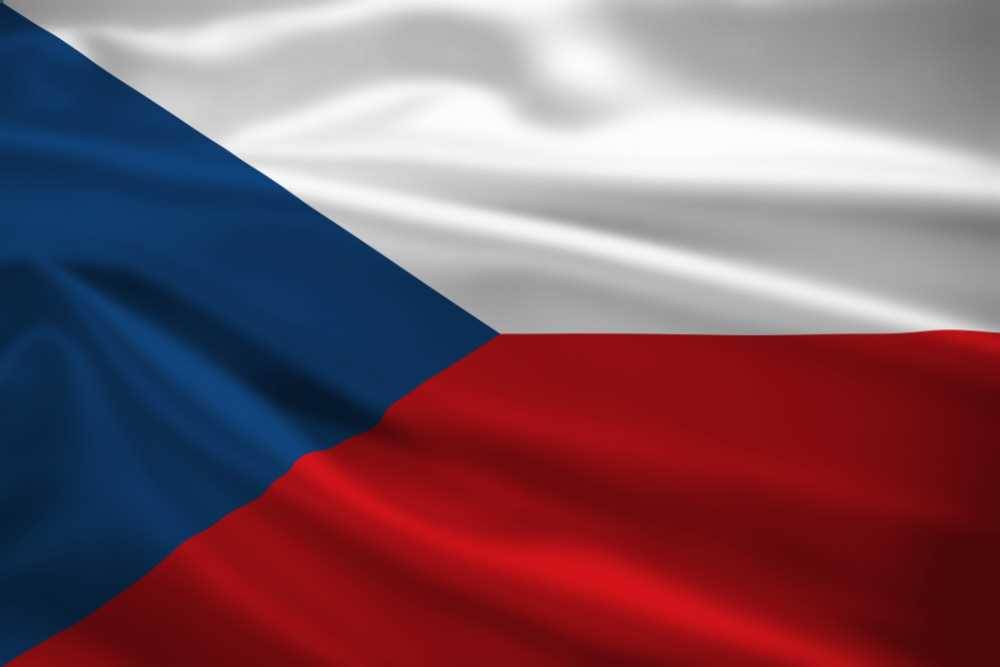EnviroMail 43 Canada
Accurate Measurement of Total and Un-Ionized Ammonia in Water
Testing of environmental water samples for ammonia is essential, primarily due to the toxicity of un-ionized ammonia to fish and other aquatic organisms. Ammonia is a very common pollutant, originating from natural as well as anthropogenic sources.

Global Benefits of Ammonia
The synthetic production of ammonia by the Haber-Bosch process has been called the most important invention of the 20th century. Fritz Haber received the Nobel prize in 1919 for pioneering the "fixation" of nitrogen, where nitrogen gas is converted to ammonia, a reactive form of nitrogen that can be easily be taken up by plants. Nitrogen from synthetic fertilizers now provides more than half of the nutrients required by the world's crops. Without ammonia from the Haber-Bosch process, our planet could not feed seven billion people.
Pollutant Sources of Ammonia
Ammonia is one of the world’s most highly produced industrial chemicals. Approximately 88% of all globally produced ammonia is used in fertilizer production (AIChE 2016). Other anthropogenic point sources of ammonia include the textile industry, household chemicals, explosives, the plastics industry, oil refineries, iron and steel mills, refrigeration, meat processing plants, and wastewater treatment plants. Ammonia is also produced naturally through the decomposition of nitrogen-rich organic matter, and plays a key role in the global nitrogen cycle. High levels of ammonia in aquatic environments can cause eutrophication due to its nutrient qualities.
Ammonia Toxicity
At low levels, ammonia in drinking water is not considered toxic to humans. It is produced naturally in the human body and is efficiently targeted and detoxified by specific enzymes. However, ammonia is highly toxic to fish and amphibians at very low concentrations, since they lack these enzymes. A Canadian Water Quality Guideline for the Protection of Freshwater Aquatic Life has been established for ammonia at 0.019 mg/L, but the guideline applies only to un-ionized ammonia (NH3). Un-ionized ammonia frequently causes fish kills as well as chronic health issues to aquatic life.
Ionized ammonia (ammonium, NH4+) is much less toxic to aquatic life (CCME 2010). Several Canadian provincial regulatory standards are based on the CCME guideline for un-ionized ammonia, but have adopted an “as N” concentration of 0.016 mg/L, adjusting for the molecular weight ratio of NH3 to N (1.216); examples include the Alberta Tier 1 Guidelines, the Alberta Surface Water Quality Guidelines, and the Saskatchewan Environmental Quality Guidelines.
The Canadian Wastewater Systems Effluent Regulations (WSER) include a limit for un-ionized ammonia (at 15°C) in effluent at 1.25 mg/L (as N); the 15°C temperature is used within the WSER un-ionized ammonia calculation, and represents the water temperature of the Rainbow Trout Acute Lethality Test, another key test required by the WSER (WSER 2015).
| Temp (°C) |
pH | ||||||||
| 6.0 | 6.5 | 7.0 | 7.5 | 8.0 | 8.5 | 9.0 | 9.5 | 10.0 | |
| 0 | 0.008 | 0.026 | 0.082 | 0.261 | 0.820 | 2.55 | 7.64 | 20.7 | 45.3 |
| 5 | 0.012 | 0.039 | 0.125 | 0.394 | 1.23 | 3.80 | 11.1 | 28.3 | 55.6 |
| 10 | 0.018 | 0.058 | 0.186 | 0.586 | 1.83 | 5.56 | 15.7 | 37.1 | 65.1 |
| 15 | 0.027 | 0.086 | 0.273 | 0.859 | 2.67 | 7.97 | 21.5 | 46.4 | 73.3 |
| 20 | 0.039 | 0.125 | 0.125 | 1.24 | 3.82 | 11.2 | 28.4 | 55.7 | 79.9 |
| 25 | 0.056 | 0.180 | 0.566 | 1.77 | 5.38 | 15.3 | 36.3 | 64.3 | 85.1 |
| 30 | 0.080 | 0.254 | 0.799 | 2.48 | 7.46 | 20.3 | 44.6 | 71.8 | 89.0 |
Equilibrium of Ammonia Species
To interpret the CCME guideline, one must understand that the NH3 and NH4+ species co-exist in aqueous solution in an acid/base equilibrium controlled primarily by pH and to a lesser extent by temperature (see Table 1 and Figure 2). Ammonium (NH4+) is the principal species that exists under the pH and temperature conditions of most natural waters. The proportion of un-ionized ammonia (which exists in water as a dissolved gas) increases as pH becomes more basic and as temperatures rise.

Figure 2. Distribution of NH3 and NH4+ in Water (10°C)
Calculation of Un-Ionized Ammonia
To compare laboratory test results for ammonia with the CCME or provincial water quality guidelines, one needs to convert “Ammonia, Total (as N)” to the corresponding concentration of un-ionized ammonia in the water body (in mg/L of NH3 or N, depending on which guideline units are applicable). Equations are provided within the CCME guideline document to calculate the exact fractions of NH3 and NH4+ that will exist in water at any pH and temperature.
| Example Ammonia Species Calculations | Test Sample #1 |
Test Sample #2 |
| Ammonia, Total (as N) lab result (mg/L of N) | 0.200 | 0.200 |
| Field pH | 7.0 | 9.0 |
| Field Temperature (°C) | 10 | 5 |
| % Un-Ionized Ammonia (from Table 1 or calc) | 0.186% | 11.1% |
| Ionized Ammonia (mg/L of N) | 0.1996 | 0.1778 |
| Ionized Ammonia (mg/L of NH4+) | 0.257 | 0.229 |
| Un-Ionized Ammonia (mg/L of N) | 0.000372 | 0.0222 |
| Un-Ionized Ammonia (mg/L of NH3) | 0.000452 | 0.0270 |
| CCME Aquatic Life guideline assessment (0.019 mg/L Un-ionized Ammonia NH3) |
passes | fails |
| Molecular Weight of Nitrogen (N), g/mole Molecular Weight of Ammonia (NH3), g/mole Molecular Weight of Ammonium (NH4+), g/mole |
14.01 17.03 18.04 |
Extrapolation of the values shown in Table 1 can be used to estimate the percentage fraction of un-ionized ammonia in any water sample with temperature from 0-30°C and pH between 6-10 (CCME 2010). Example calculations, including unit conversions, are provided in Table 2. ALS can calculate and provide un-ionized ammonia concentrations on our test reports if field pH and temperature are provided.
Laboratory Testing for Ammonia
Water samples for ammonia testing are preserved in the field with sulfuric acid (H2SO4), which converts all ammonia to the ionic ammonium form (NH4+); this prevents microbial degradation and off-gassing of ammonia gas. Preserved ammonia samples are relatively stable, with a maximum recommended hold time of 28 days. ALS Canada uses 100 mL amber glass bottles with air-tight Teflon septa for ammonia and other nutrients (including TOC, COD, TKN, TN, Total Phosphorus, Total Phenols); this is optimal to prevent ammonia vapour contamination issues during transport and storage. Sample containers are pre-charged with enough sulfuric acid to reduce pH to <2. Testing for dissolved ammonia (and other dissolved nutrients) requires field filtration prior to preservation. ALS provides convenient syringe filters by request, which are proofed for suitability. When filtering, ALS recommends to discard the first 2-3 mL of sample to pre-rinse each filter. Refer to EnviroMail 10 for more details.
ALS Canada uses an automated OPA (orthophthaldialdehyde) fluorescence method for all trace level testing of ammonia in water. The OPA method gives low part per billion detection limits, using membrane dialysis to separate gas-phase ammonia from the water sample prior to detection, which eliminates physical and chemical interferences within the sample matrix. The robustness of this method makes it suitable for most waters and wastewaters, including complex matrices and marine waters. Alternative colourimetric methods can experience interference from complex sample matrices, colour, or turbidity.
By convention, laboratory test results for ammonia are reported as “Ammonia, Total (as N)”, which refers to the sum of the un-ionized (NH3) and ionized (NH4+) ammonia species in the sample, expressed in units of milligrams of nitrogen per litre of sample. Most laboratory tests for nitrogen species are reported “as N”, so that results for total nitrogen or total Kjeldahl nitrogen can be easily compared between constituent species without unit conversions (e.g. nitrate, nitrite, and ammonia).
| Test Description | Requirements | Test Code |
LOR (mg/L) |
| Ammonia, Total (as N) |
Field Preservation | E298 | 0.005 |
| Ammonia, Total Dissolved (as N) |
Field Filtration & Preservation |
E309 | 0.005 |
| Un-Ionized Ammonia (Calculation, as N or NH3) |
Ammonia, Total & Field pH/Temperature |
EC298A | 0.001 |
| Un-Ionized Ammonia at 15°C, WSER (Calculation, as N) |
Ammonia, Total & pH@15°C |
EC298 | 0.001 |
The most common ALS Canada test codes for Ammonia are shown in Table 3 with Limits of Reporting (LORs) and pre-requisite requirements. All ALS Canada labs that offer testing for ammonia in waters hold ISO 17025 accreditation through CALA.
 Figure 3. Nitrogen Cycle imbalance can cause ammonia buildup Ammonia – Trouble for Your AquariumDid you know that an imbalance in the nitrogen cycle is the most common cause of fish mortality in aquariums? Ammonia is produced rapidly in aquariums by bacterial decomposition of nitrogen-containing organic matter (fish waste and uneaten food). Healthy, established aquariums contain at least two bacterial strains that work together in a 2-step process to eliminate toxic ammonia. Nitrosomonas bacteria first oxidize ammonia into nitrite (NO2), which is also highly toxic to fish. In the 2nd step, Nitrobacter bacteria convert nitrite into nitrate (NO3), which fish tolerate at much higher levels. Toxic levels of ammonia can build up quickly in aquariums without sufficient populations of both of these necessary bacterial strains, which is why fish often die in newly established aquariums. A common mistake is to change out all the water from an aquarium during tank cleanings – this can upset the balance of the nitrogen cycle, causing ammonia to accumulate, which could mean trouble for your fish. |
Please contact your ALS Canada Project Manager for more information or to arrange for sample containers.
References:
- AIChE 2016. Introduction to Ammonia Production, V. Pattabathula & J. Richardson, American Institute of Chemical Engineers.
- CCME 2010. Canadian Water Quality Guidelines for the Protection of Aquatic Life, Ammonia, Canadian Environmental Quality Guidelines.
- WSER 2015. Wastewater Systems Effluent Regulations, SOR/2012-139, Minister of Justice.























































